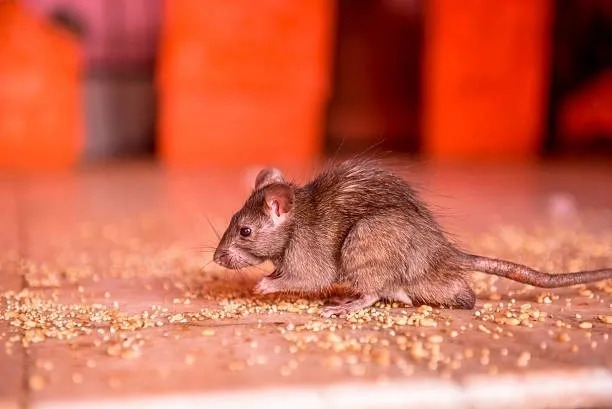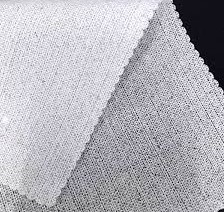Discovering a rat infestation in your home or business can be a shocking and unsettling experience. While eliminating the rodents is a critical first step, it is *not* the end of the process. The aftermath of an infestation often leaves behind hazardous waste, structural damage, and contamination that can pose serious risks to your health and property. This is why **rat infestation cleanup is just as important as rat removal**—sometimes even more.
Whether you recently dealt with an infestation or want to understand why cleanup matters, here is a comprehensive look at why proper sanitation and restoration are crucial once rats are gone.
—
## **1. Rats Leave Behind Dangerous Contaminants**
Even after the last rat is removed, your home may still harbor harmful pathogens. Rats commonly spread over **35 known diseases**, many of which can be transmitted indirectly through contaminated surfaces, nesting areas, or airborne particles.
### **Common contamination sources include:**
* **Urine**
Often spread across floors, insulation, walls, and storage areas. Rat urine can contain pathogens like leptospira, hantavirus, and salmonella.
* **Droppings**
Rat droppings dry out and can become airborne, increasing the risk of inhalation-based infections.
* **Hair, dander, and carcasses**
These are not only unsanitary but can also trigger allergies or attract secondary pests like flies and roaches.
* **Grease and smear marks**
Rats leave trails of grease from their bodies along walls and tight spaces, carrying bacteria with them.
Without proper cleanup—typically involving PPE, commercial-grade disinfectants, and specialized equipment—these contaminants can linger long after the rodents are gone.
—
## **2. Health Risks Remain Long After Rats Are Gone**
One of the biggest reasons cleanup is essential is that rat-related health risks do not end when the infestation ends. Their droppings, urine, and nesting materials can continue to pose threats.
### **Serious illnesses linked to rat contamination include:**
* **Hantavirus Pulmonary Syndrome (HPS)** – Spread by inhaling dust from droppings or urine.
* **Leptospirosis** – Transmitted through contaminated water or soil.
* **Salmonella** – A common risk when rats contaminate food or surfaces.
* **Rat-Bite Fever** – Can occur from contact with contaminated materials.
* **Allergies and asthma** – Rat hair and fecal particles can trigger respiratory reactions.
Improper cleanup—such as sweeping or vacuuming droppings—can aerosolize pathogens, making them easier to inhale. Professional cleanup ensures the environment is safely disinfected and sanitized using methods that eliminate health risks rather than spread them.
—
## **3. Rats Cause Hidden Structural Damage**
Rats are notorious gnawers. Their constant chewing can cause damage to:
* **Insulation**
* **Electrical wiring**
* **Wood framing**
* **Drywall**
* **Pipes**
* **Stored goods and personal belongings**
After removal, a thorough inspection is necessary to identify what the rats have damaged. Failing to repair these issues can lead to:
* Electrical shorts or fire hazards
* Reduced energy efficiency due to damaged insulation
* Water leaks from chewed plumbing
* Weak structural components
* Mold growth where insulation has been contaminated
Cleanup involves not just removal of droppings and nests but also evaluating and restoring any areas impacted by chewing or contamination.
—
## **4. Leftover Smells Attract New Rats**
Rats communicate using pheromones and scent trails. If these odors remain after an infestation, they can attract new rodents seeking food, shelter, and nesting sites.
Common odor sources include:
* Urine-soaked insulation
* Nesting materials
* Decomposed carcasses
* Feces build-up in walls or crawlspaces
These smells can linger in walls, attics, crawlspaces, and behind appliances.
A proper cleanup includes **odor neutralization**, not just masking. This helps prevent future rodent activity and keeps your home smelling fresh.
—
## **5. Infestations Often Spread to Hard-to-Reach Areas**
Many homeowners are surprised to learn that rats rarely stay in obvious places. They often infest:
* Attics
* Crawl spaces
* Wall voids
* Basements
* HVAC systems
* Underflooring
* Behind cabinets and appliances
These hidden areas make cleanup challenging—and risky—without the right tools and experience.
Professional cleanup teams use:
* HEPA-filtered vacuums
* Enzyme-based disinfectants
* Insulation removal machines
* Crawlspace and attic safety equipment
* Protective respirators and suits
This ensures every contaminated area is sanitized, including spaces the homeowner may not realize rats occupied.
—
## **6. Nests Must Be Removed Completely**
Rat nests are breeding grounds for bacteria, fleas, mites, ticks, and other parasites. Simply removing the rats without removing their nests leaves these vectors behind, allowing them to spread through the property and cause new problems.
Nests are often made of shredded:
* Paper
* Insulation
* Fabric
* Cardboard
* Food packaging
They may be soaked with urine or feces, making them extremely hazardous. Cleanup includes safe removal and disposal of these materials in sealed bags, followed by disinfection of the surrounding surfaces.
—
## **7. Preventing Future Infestations Requires Post-Cleanup Restoration**
Cleanup isn’t just about removing waste—it’s a key part of preventing rats from returning. Once the area is sanitized, proper **exclusion** and **restoration** work is needed to stop re-entry.
### Cleanup teams often handle:
* **Sealing entry holes**
* **Replacing damaged insulation**
* **Repairing gnawed wiring or pipes**
* **Installing barriers or rodent-proofing measures**
Rats can squeeze through openings as small as a quarter. During cleanup, technicians identify these vulnerabilities and eliminate them.
—
## **8. Protects Indoor Air Quality**
Rat infestations significantly degrade air quality. Airborne particles from droppings, urine, and nesting materials can circulate throughout the home, especially if the rats reached HVAC ducts.
Poor air quality can lead to:
* Coughing
* Difficulty breathing
* Chronic allergies
* Headaches
* Long-term respiratory issues
Cleanup includes:
* Using HEPA vacuums to capture fine particles
* Sanitizing surfaces with hospital-grade disinfectants
* Removing contaminated insulation that traps odors and bacteria
This restores safe, clean air inside your property.
—
## **9. Prevents Secondary Pest Problems**
Rat waste and leftover food attract other pests, such as:
* Cockroaches
* Ants
* Flies
* Beetles
* Mites and ticks
Without cleanup, you could eliminate one infestation only to face another. Proper sanitation removes the attractants that other pests feed on or use for shelter.
—
## **10. Provides Peace of Mind After a Stressful Experience**
Dealing with rats can be emotionally distressing. For many people, the psychological impact of knowing rats lived in their home lasts far longer than the infestation itself.
Cleanup helps restore peace of mind by:
* Eliminating odors
* Ensuring safety
* Restoring cleanliness
* Reclaiming contaminated spaces
* Making the home feel livable and comfortable again
A thorough cleanup gives homeowners confidence that their environment is safe, hygienic, and fully restored.
—
# **Final Thoughts**
Rat infestation cleanup is essential not just for sanitation, but for protecting your health, home, and future comfort. Removing the rodents is only the beginning—what they leave behind can be just as dangerous as the infestation itself.
A proper cleanup includes:
✅ Removing contaminated waste
✅ Disinfecting surfaces and hidden areas
✅ Repairing structural damage
✅ Restoring insulation and air quality
✅ Sealing entry points to prevent future infestations
By investing in professional cleanup after rat removal, you ensure your property is safe, healthy, and truly rodent-free.


